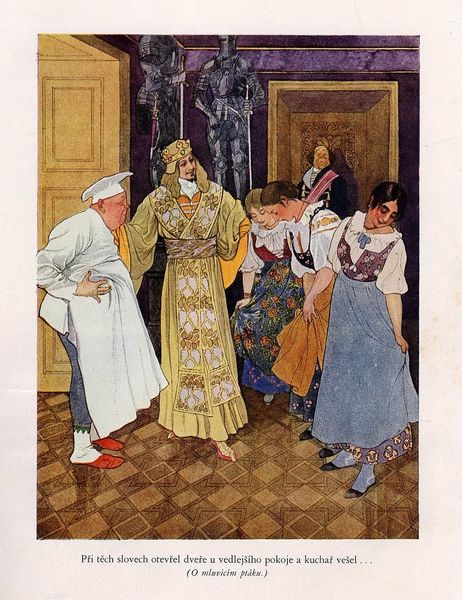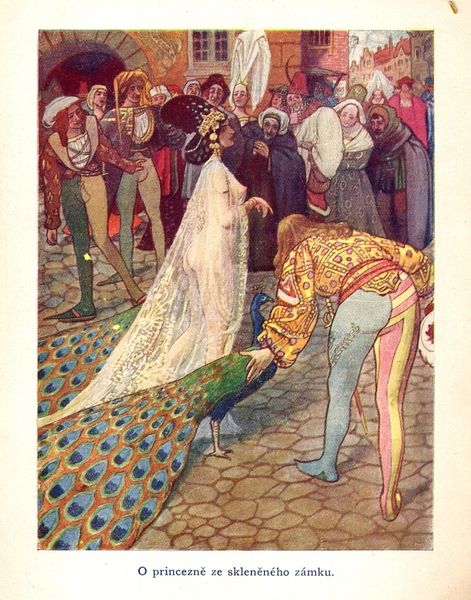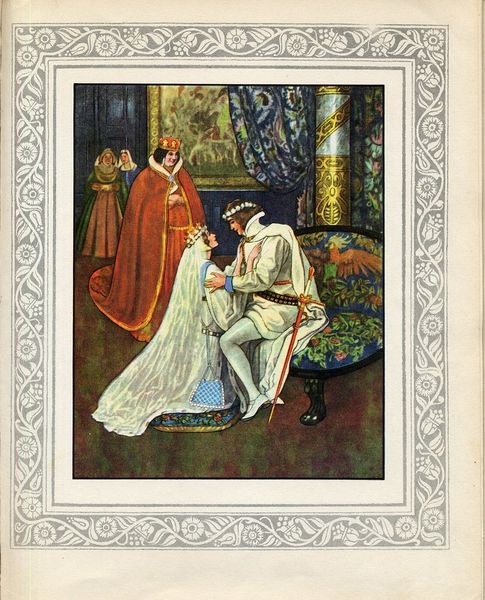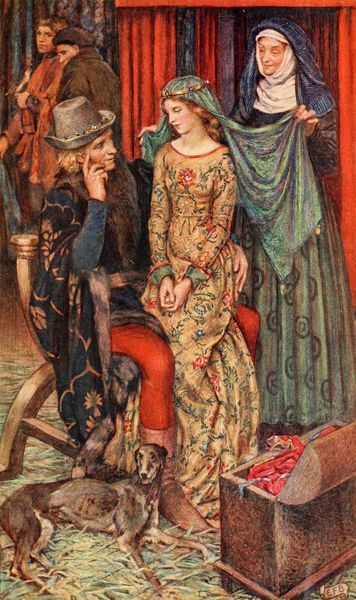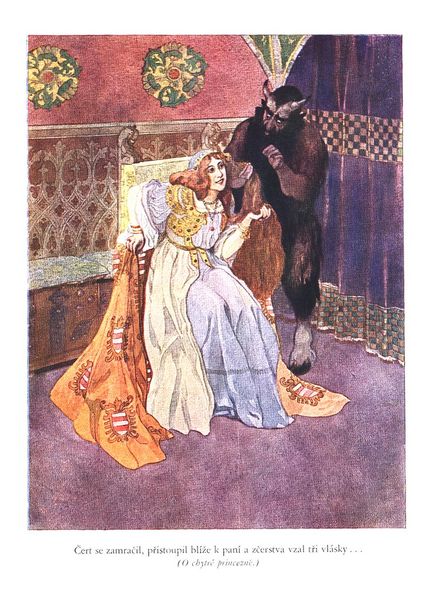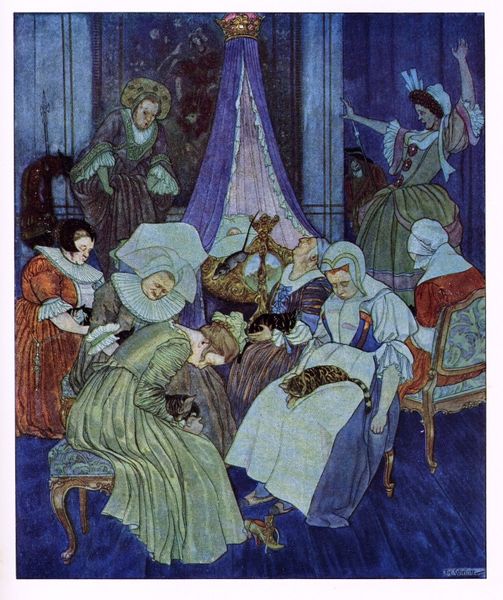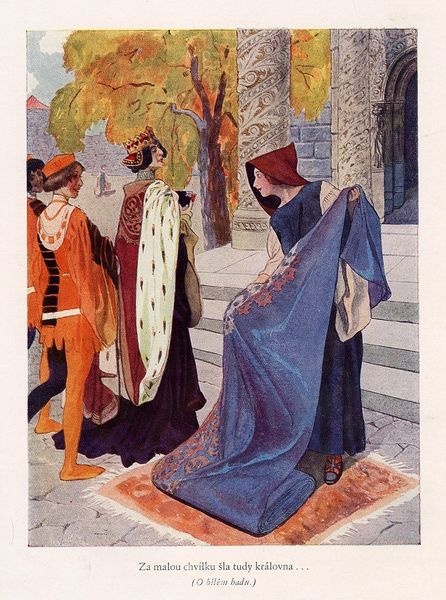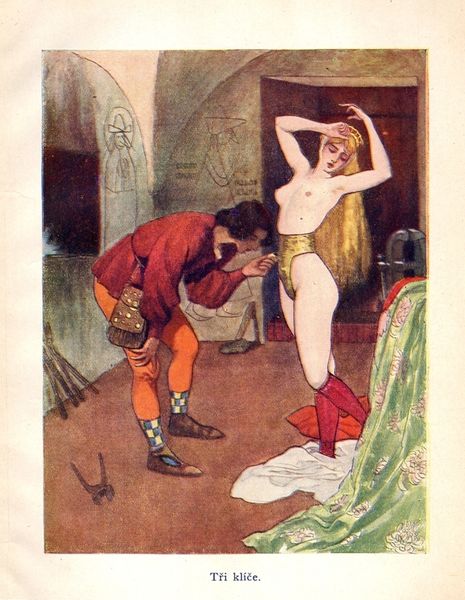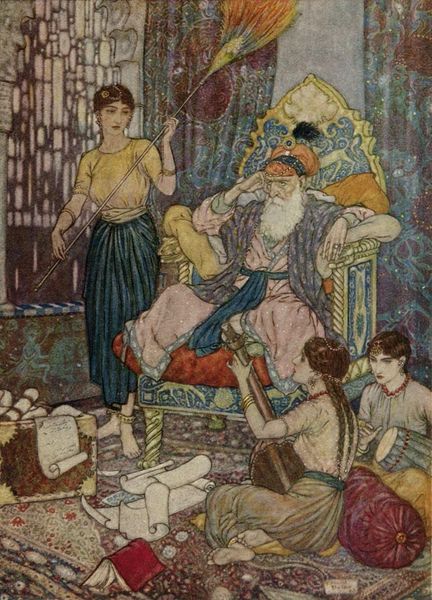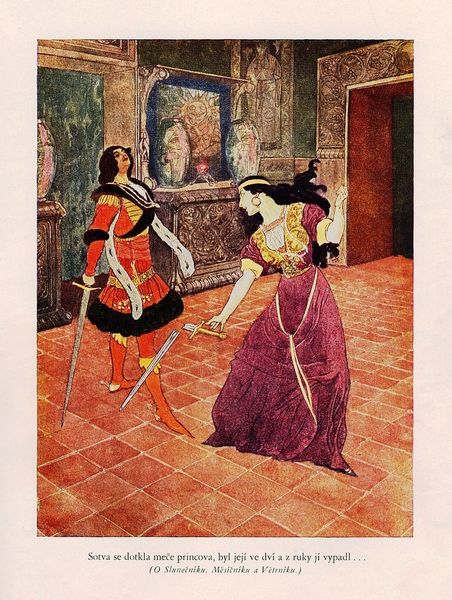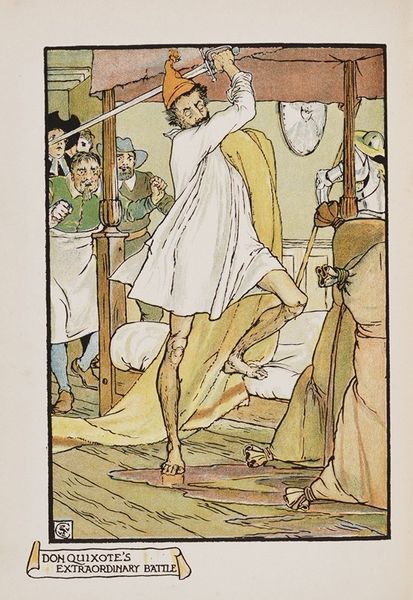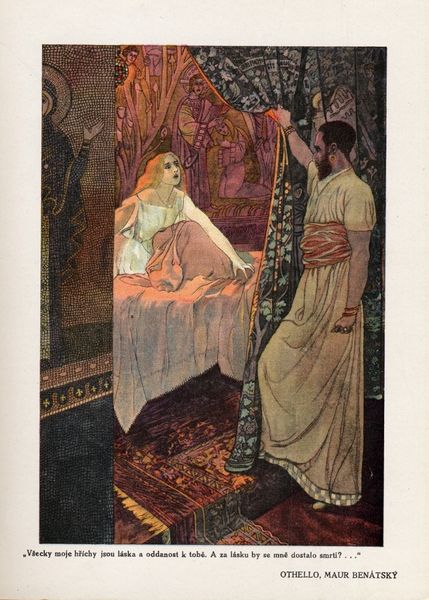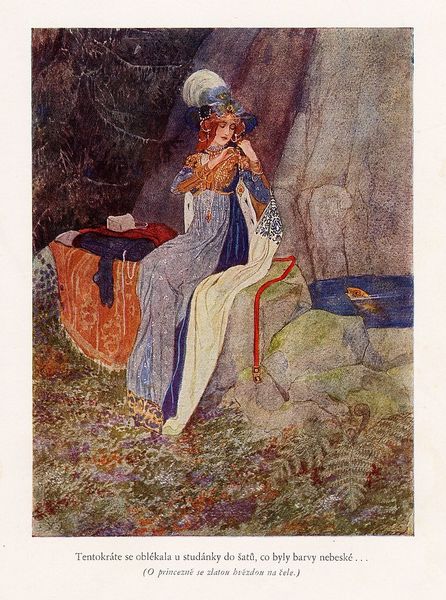
watercolor
#
medieval
#
narrative-art
#
landscape
#
caricature
#
fantasy-art
#
figuration
#
watercolor
#
watercolour illustration
Copyright: Public domain
Curator: The scene before us, "Princess with Horns," is by Artu\u0161 Scheiner, executed in watercolor. The title hints at a figure whose very being challenges conventional understanding of royalty. Editor: It’s whimsical and disturbing. I find myself immediately drawn to the stark contrast in the expressions. There is a definite angularity to the overall design—the stark lines of the tile against the soft wash of colors in the figures' clothing. Curator: Note how the composition deliberately places her at the center of courtly scrutiny, highlighting power dynamics—the leering suitor, the skeptical King. Scheiner’s art consistently integrates medieval influences and fantasy. This integration lends itself well to explorations of cultural norms. What is monstrous? What is considered royalty? Who has power, and why? Editor: Right, the antlers are the clear focal point but there are these minute details, almost hidden, the intricate fabric design of her dress. Do you notice the use of asymmetry? How it guides our vision throughout the court? Curator: I can’t help but interpret her horned headdress as symbolic of feminine power. Often associated with pagan deities, or with the figure of the witch. She represents female sovereignty over cultural constraints that insist a “princess” behave a certain way. Editor: Perhaps the watercolor medium is worth thinking about as well, how it affects the visual properties here? Watercolor's fluidity and translucent quality contribute to the dreamlike aesthetic. These figures, especially the princess herself, appear suspended between reality and the fanciful. Curator: Her gaze, however, subverts our reading, suggesting anything but meek acceptance of social roles. Scheiner questions how the cultural understanding of royalty has consequences for our society. The court's judgment becomes a reflection of societal biases. Editor: Ultimately, its value lies in the formal paradox it creates; a blend of medieval inspiration and subtle visual cues that create an intriguing tableau ripe for rereading, ripe for re-examination. Curator: Yes, seeing artwork such as this allows us the unique possibility of deconstructing historical archetypes. And seeing new methods of re-asserting and redefining the parameters that create those stereotypes in the first place.
Comments
No comments
Be the first to comment and join the conversation on the ultimate creative platform.

